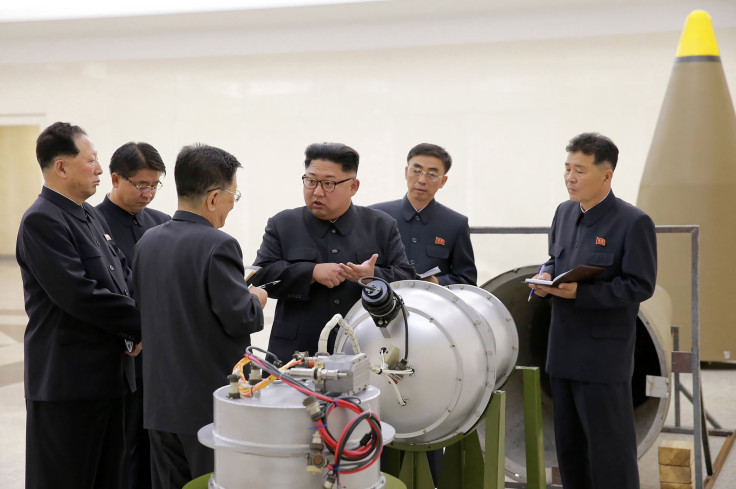North Korea Might Possess Atomic Bomb, Kim Jong Il’s Photograph Suggests

Experts went into a frenzy after Kim Jong Il, former North Korean leader and the father of Kim Jong Un, appeared in a photograph, inspecting what seemed like an atomic bomb.
The photograph in question was hanging on a wall of an undisclosed venue where Pyongyang’s arms and munitions industry conference was being held. Speculations regarding the photograph began after footage of the conference was released by North Korea on Dec. 12, the BBC reported.
and is that a A-bomb or sth? pic.twitter.com/UbuLGwAmZg
— Taepodong (@stoa1984) December 12, 2017
The 30-minute-long video rested on the photograph for a few seconds, long enough for social media users to get curious about the object that senior Kim was examining. In the picture — estimated to have been taken between 2006 and 2009 — the former North Korean leader is pointing at a white globe-like structure. The picture was placed among an array of other photographs, meant to reflect North Korea’s "achievements" in arms production.
The conference was attended by the junior Kim and other senior officials. Since the quality of the footage was grainy and did not focus on the controversial photograph in particular, experts found it difficult to verify whether the object in the picture was indeed an atomic bomb or not.
There are no publicly available images of the senior Kim looking at a nuclear weapon. Many users noticed that the picture bore similarities to the photograph of junior Kim standing next to North Korea’s first (claimed) hydrogen bomb.
According to reports, the photograph could just be a mock-up of a globe, since there is no evidence of a scientist being able to miniaturize a nuclear device at the time. Nevertheless, if this photograph was of the deadly bomb, it would not be the first time that North Korea has "accidentally" given away the extent of their military might.
When junior Kim visited a defense facility in August, the world became aware of the fact that his regime had managed to develop some highly advanced intercontinental ballistic missiles, no one knew North Korea was in possession of until that time.
Meanwhile, the Trump administration is looking to persuade North Korea to grace the negotiation table. "We've said from the diplomatic side, we're ready to talk anytime North Korea would like to talk," Secretary Of State Rex Tillerson said at the Atlantic Council in Washington on Tuesday.
Tillerson added that they are willing to forego the practice of pre-planning the topics of discussion if that coaxes Pyongyang to open a non-threatening dialogue with the West.
"We are ready to have the first meeting without precondition," Tillerson said. "Let's just meet, and we can talk about the weather if you want. Talk about whether it's going to be a square table or a round table, if that's what you are excited about. But can we at least sit down and see each other face to face, and then we can begin to lay out a map, a road map of what we might be willing to work towards."
However, before such a meeting can take place, there is one condition that junior Kim’s regime needs to meet.
"We are open to the possibility of dialogue with North Korea, with the aim of denuclearizing the Korean peninsula. But North Korea must first refrain from any further provocations and take sincere and meaningful actions toward denuclearization," a National Security Council spokesperson told CNN.
In September 2005, following years of bellicose comments from then-President George W. Bush, North Korea tentatively agreed in six-nation talks to suspend its entire weapon and nuclear program in exchange for energy assistance and economic cooperation from the U.S., South Korea, China, Japan and Russia. North Korea would later make claims that it had still had plans to resume building nuclear reactors.
© Copyright IBTimes 2025. All rights reserved.






















